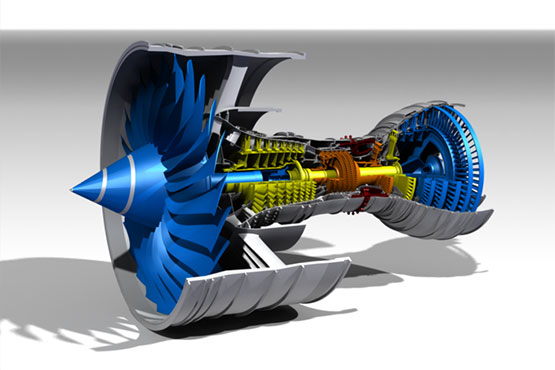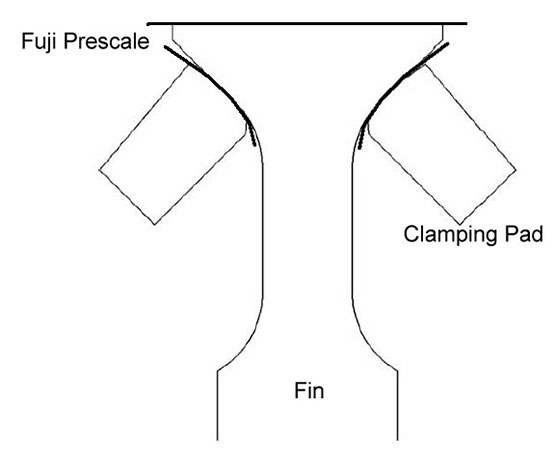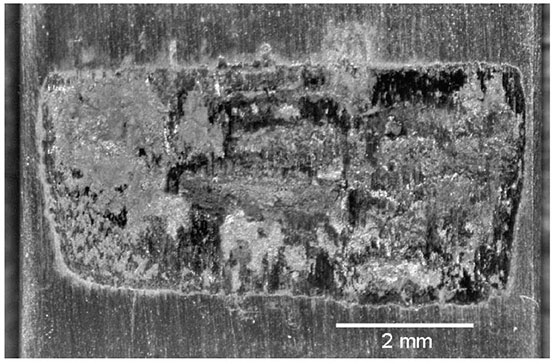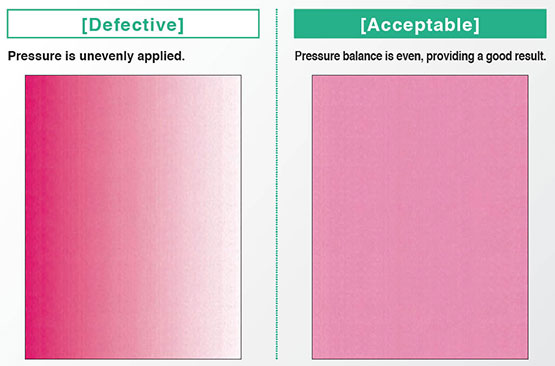Tactile Pressure Mapping With Fuji Prescale as Method for Fins Alignment In Turbofans
Keywords: turbofan servicing, tactile pressure, pressure mapping, pressure balancing, fin replacement procedure, fuji prescale film, aviation maintenance Summary: Turbofans are complex devices that need maintenance. Using Fuji Prescale to map tactile pressure, technicians can quickly and efficiently repair turbofans and properly align fins onto fan matrices. Source: Patrick J. Golden, Development of a dovetail fretting fatigue fixture for turbine engine materials, International Journal of Fatigue 31 (2009) 620-628.
Written by Igor Mateski
Turbofan operational parameters and loads
Turbofans as mechanical elements handle high pressures and high rates of rotation. In some areas of application, turbofans also must endure variable fluid viscosity as well as high temperatures.
All these operational parameters require extreme attention to detail in manufacturing and mounting of turbofans. Depending on the application, these devices can be molded as a single part, or their fins can be removable/interchangeable, partly for assembly reasons, partly for lowering maintenance costs of eg. airplane engines.
The complexity of turbofan applications is of highest rank which is obvious in the image below, a CAD rendering of a Rolls Royce Trent 900 turbofan:

Aligning Fins Using Tactile Pressure Mapping
As fans from turbofan engines can be quite large (the Rolls Royce Trent 900 has a diameter of 116"), the only way of precisely manufacturing them is by assembling the fins onto a central matrix. At high rotations, even the slightest misbalance can be disastrous, so engineers and maintenance staff must use Fuji Prescale films to properly align and clamp down each fin.
Proper fin alignment and clamping helps in minimizing dynamic misbalance of the entire fan and engine. Below is a schematic of how a fin is aligned and clamped onto the central matrix:

With the fin in place, clamping pads are bolted down to nominal bolting force. This bolting force creates tactile pressure between the fin and pads, as well as between the fin and central matrix.
By measuring tactile pressure between the fin and pads, technicians can make sure that the fin will not be subjected to uneven static forces that could result in local fatigue and damage of the fin stem. Below is an image of a fin stem damage caused by imbalance of the clamping force:

This surface defect is caused by a slip of the pad against the fin stem. The slip also results in improper tactile force between the fin stem and fan matrix. In this case, the fan is out of balance and if left untreated, fatigue and vibration can cause enormous damage to the engine.
Benefits of Using Fuji Prescale In Turbofan Servicing
When repair technicians use Fuji Prescale to measure pressure distribution, simple visual inspection of the developed Fuji Prescale films can reveal any pressure misbalance. Below are screenshots of developed films that serve as direct indicators of where and what needs to change in the clamping of fins onto fan matrices.

To properly position the fin onto the fan matrix, technicians should test for pressure balance between the fin and fan matrix (if the clamping method allows such a measurement). Measuring the tactile pressure between the clamps and fin stem will reveal if the same force is applied onto the stem surface.
With the Fuji Prescale film in place (see Image 2), the clamps should be loaded with nominal bolting pressure. This pressure will develop the Fuji Prescale films and will create a visual map of the maximal pressure throughout the contact surfaces. Inspecting each of the developed Fuji Prescale films will show if the tactile pressure between the stem and fan matrix is evenly distributed. If it is not (see image above, left detail), technicians will need to compare the developed Fuji Prescale films from each clamping pad.
Depending on the tactile pressure scenarios, either the matrix may be due for replacement, or the fan itself may be defective, or the clamping pads may need replacement.
In either case, thanks to the Fuji Prescale film and direct pressure mapping, technicians can quickly and easily establish a proper diagnosis and repair the turbofan in optimal time.
